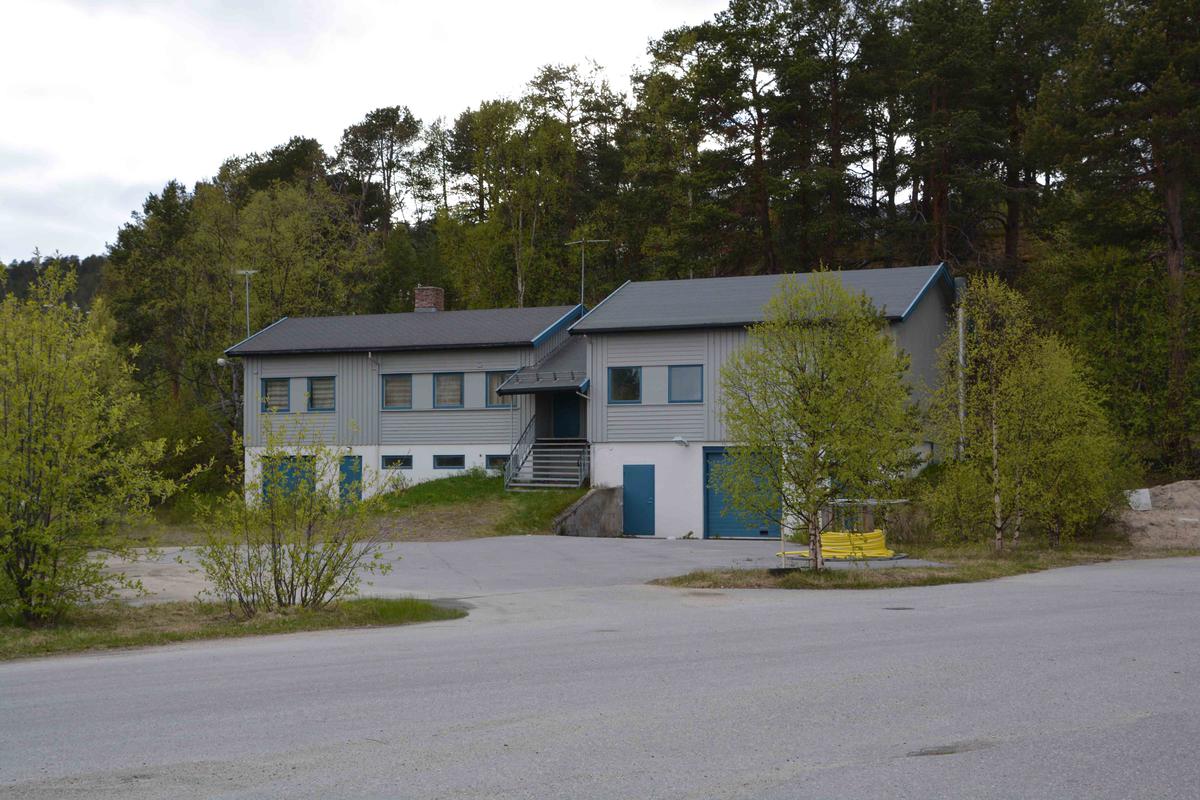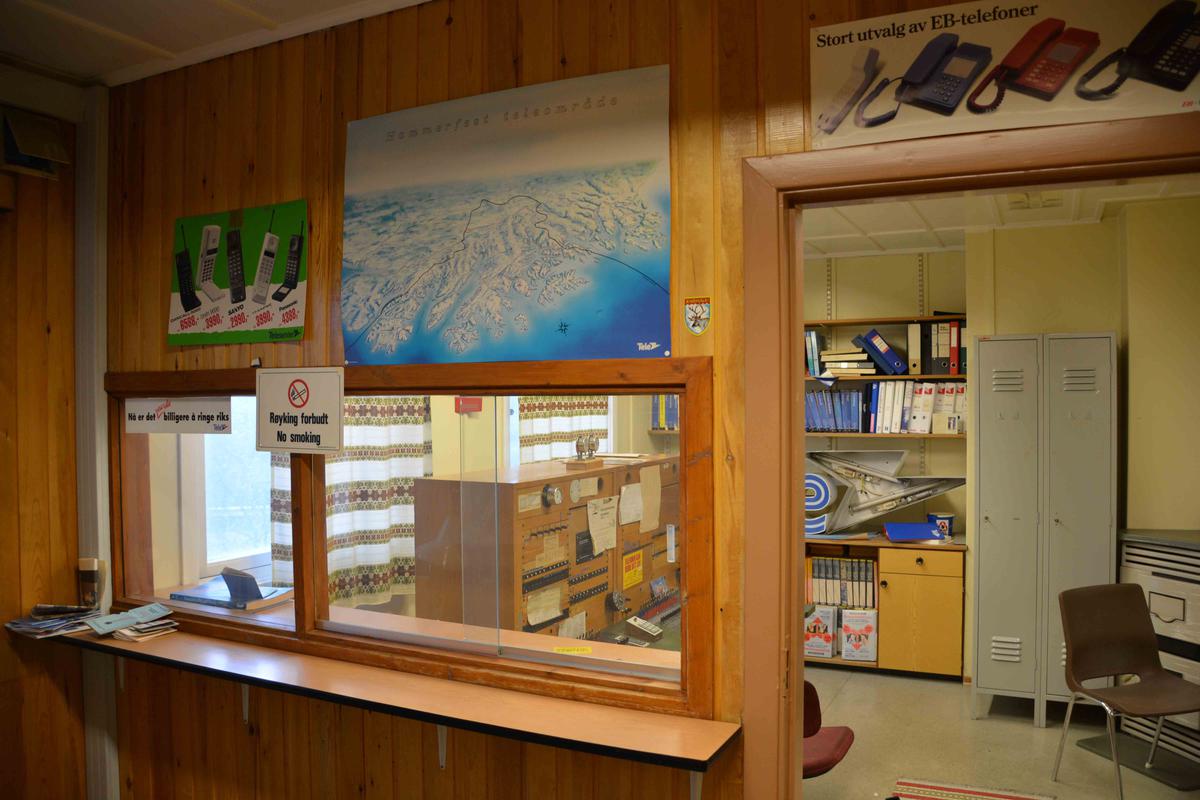-
The sami telephone exchange in Karasjok Telemuseet
1979: While nationwide automatization of telephone lines was happening at full speed, the mayor of Karasjok, Hans Guttorm, decided to put on the brakes. Hang on. What would the Sami people from the interior of Finnmark do now, if the telephone operators weren’t going to be there to help them call the Norwegian doctor, or find their way in the telephone catalogue? The catalogue wasn’t compatible with Sami naming customs, and a large part of the Sami in Karasjok did not speak Norwegian. They had become used to using the ladies at the exchange as translators and guides. Mayor Guttorm led a panel to evaluate the tele services presented to the Sami-speaking population of Finnmark. Telenor (Televerket) took these signals to heart, and kept the exchange as a Sami-speaking service.
The last pole in Dálabohki
Karasjok’s tele history, however, started a long time before the battle to save the manual telephone exchange took place. A telephone line to Karasjok was established already in 1909, but it would be several decades before the telephone was an everyday object. It wasn’t till the beginning of the 1960s that the work started to rig telephone lines from Karasjok to more rural locations. One line course followed the river, Kárásjohka and carried on along the valley to the small settlement of Dálabohki, 50 km from central Karasjok. The brothers Johansen remember the days when they as unskilled labourers helped erecting telephone poles for Telenor (Telegrafverket).
-We would shovel snow and make a snow pile, and then plant the pole in the middle of it. When spring came the pole would fall over, laughs one of the brothers in the informational film, “Fra sentral til siste stolpe,” produced by the Norwegian Telecom Museum.
A single steel wire was snaking its way across Finnmarksvidda, from pole to pole, but at times also from tree to tree. There are still insulators and junction boxes hanging from some of the pine trees in Dálabohki. To the inhabitants of this small place, calling each other was an entirely new experience.
_To start with, we would mainly be talking about how the telephone worked, one of them remembers.
-But one wouldn’t call too often. It was almost like having a holy thing in the house, says another.
-
The last manual telephone exchange in Norway Telemuseet
Public telephones in private homes
So that as many as possible could enjoy the new technology, Telenor (Telegrafverket) established public telephones and exchanges in private homes. Those who lived there were obliged to open their doors to anyone in need of a telephone. The household also had to receive calls, and go out and look for the person who was asked for by the caller. Thorolf Bjørneback grew up in a home with one of these speech exchanges.
-I would often have to go out and get people, sometimes on the other side of the river, and in winter I had to strap on my skis, he says in the film.
-People from Kautokeino out travelling with their reindeer would make a stop in our place. They would call down to the village to see who offered the best meat-prices, remembers Thorolf.
The traffic increased on the single telephone line, which inevitably led to complications: Misunderstandings, irritation and, not least, eavesdropping. The curious could, whenever they wished, pick up the receiver and listen in to one of the neighbour’s conversations. The ladies at the exchange also tended to be exceptionally well informed.
-They had the overview on everything that was happening. Even the police would come to them for advice on occasions, tells Klemet Turi from Dálabohki.
-But we never talked, promises the retired ladies in the Norwegian Telecom Museum’s film from 2006.
-Even if we knew that what was said down in the village were just rumours, we couldn’t say anything. The operators would often have to interrupt down the line because there were so many calls queueing up. Gunnar Dalsenga, who grew up in the wildernesses of Karasjok, tells us:
-We would barely have started the conversation before they started nagging. “Finished? Finished?”
-
The Sami-speaking service was locked up for the last time in 1993. Telemuseet
“Call Hammerfest”
On the 1 January 1993 it was finished. The Sami-speaking service was locked up for the last time. A note on the door read: “Call Hammerfest.” The retired switchboard operators don’t believe they’ll be particularly missed.
-It was so quiet towards the end, they say.
In addition to direct lines, mobile phones had become more and more common, even if the coverage was very variable.
-In many ways we went backwards at the time, says a man from inside his tent out on the plateau. He is a bemused, elderly, reindeer herding Sami by the name of, Maret Berit Bær, and he confirms:
-Everyone had a mobile phone, but no one had any coverage.
Today there is mobile coverage in more or less all of Finnmark, but there are still a few exceptions in the most remote parts of the plateau.
The tele technical development has moved quickly since 1993, but Norway’s last manual telephone exchange still stands as it was once left, in the centre of Karasjok. The interior, including switchboards, technical equipment and the atmosphere of a cosy work place, is today part of Telenor’s protection plan for buildings and installations.
This article is written on the basis of the film, “Fra sentralen til siste stolpe,” the Norwegian Telecom Museum’s documentary on the manual telephone exchange in Karasjok.
- 1/1


